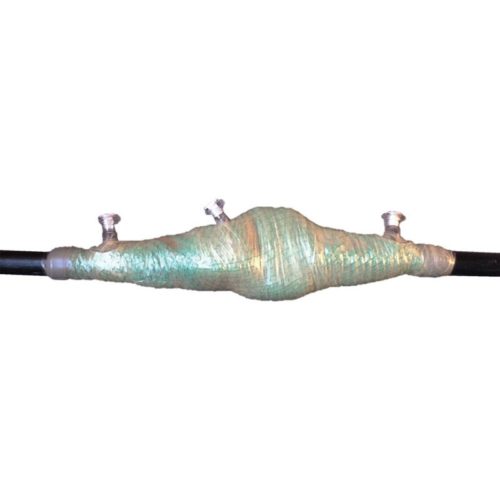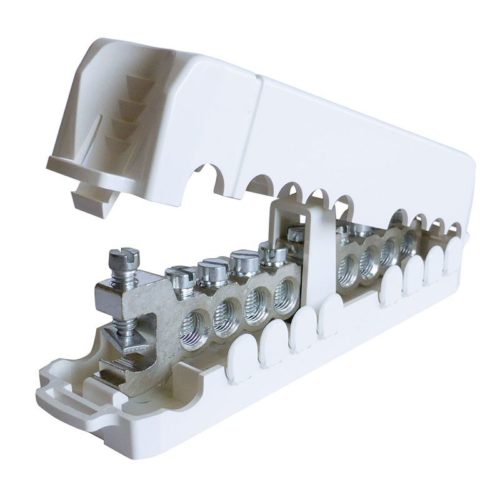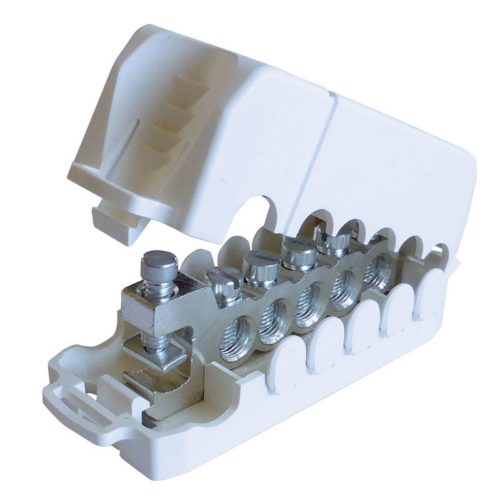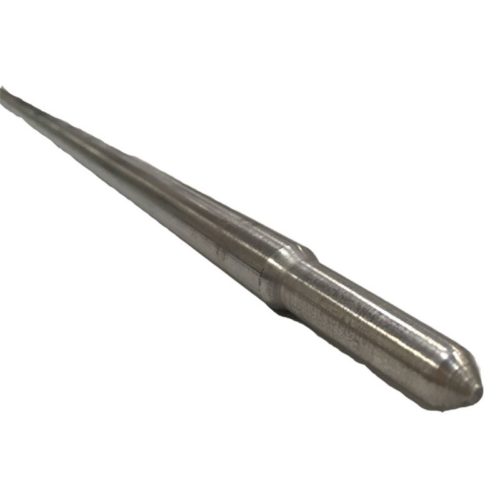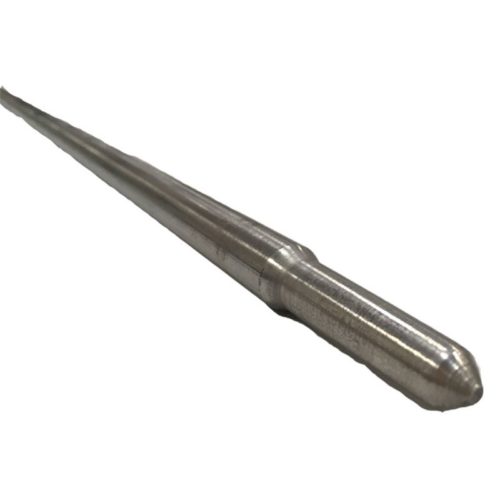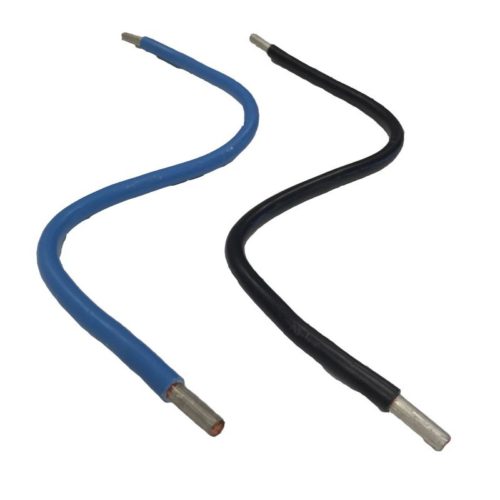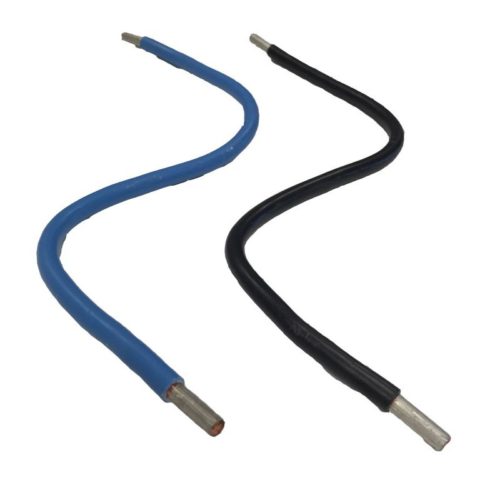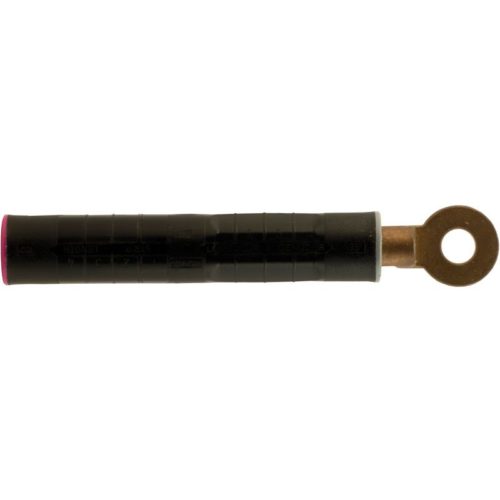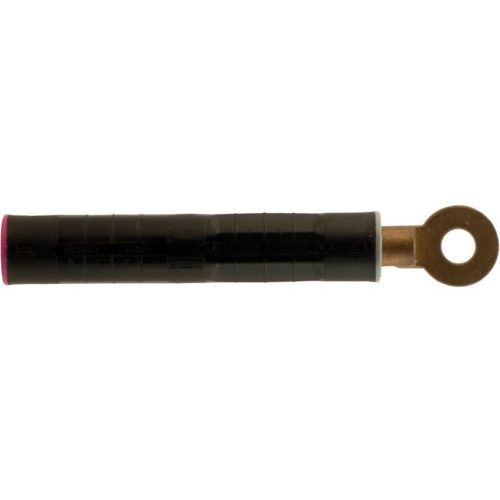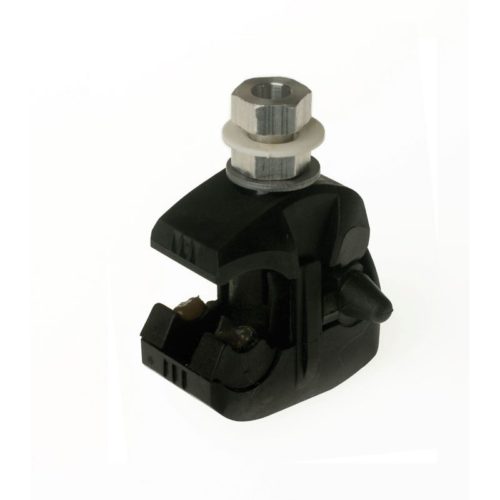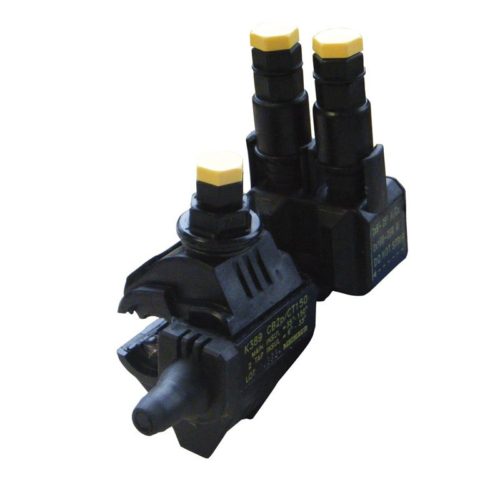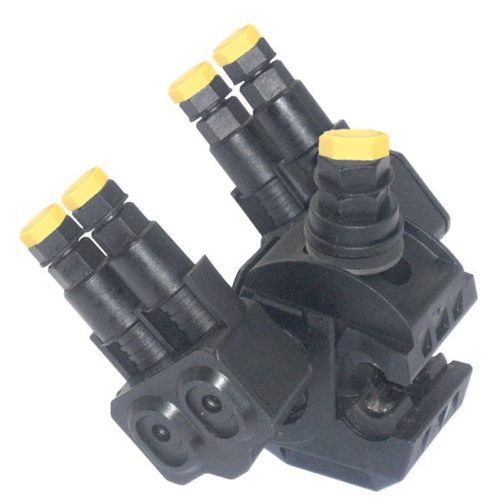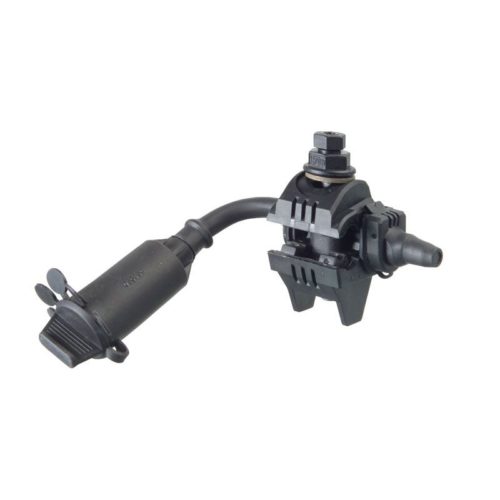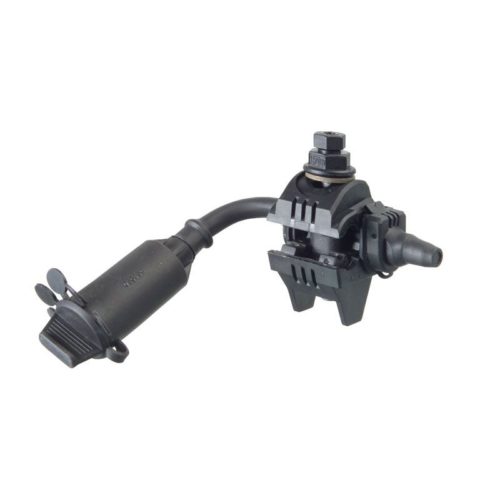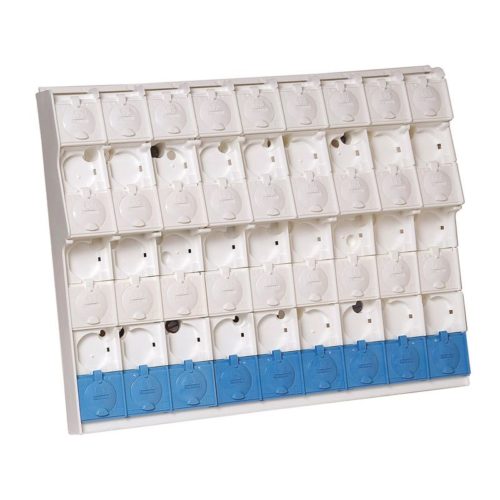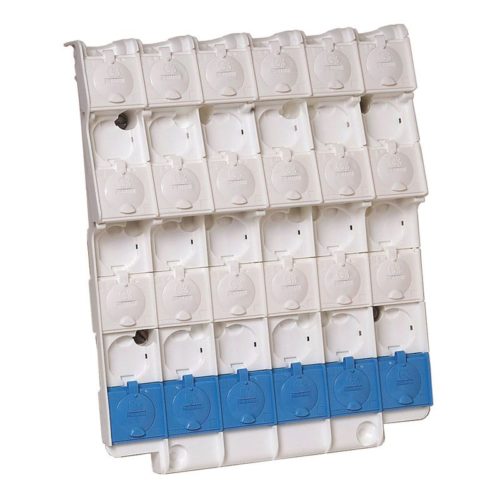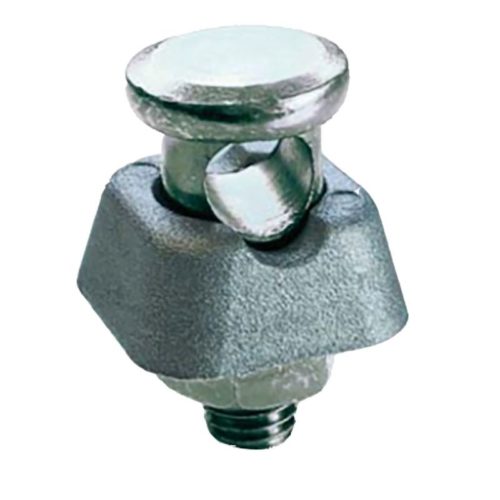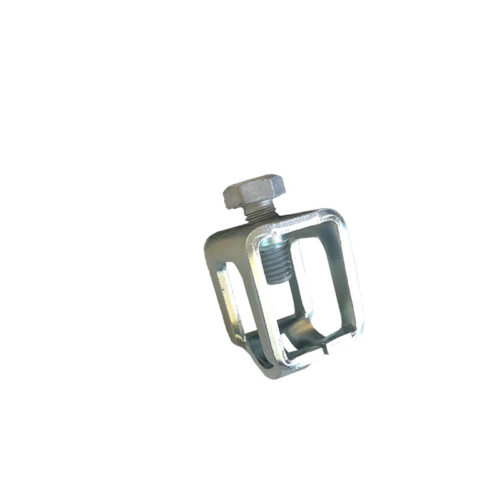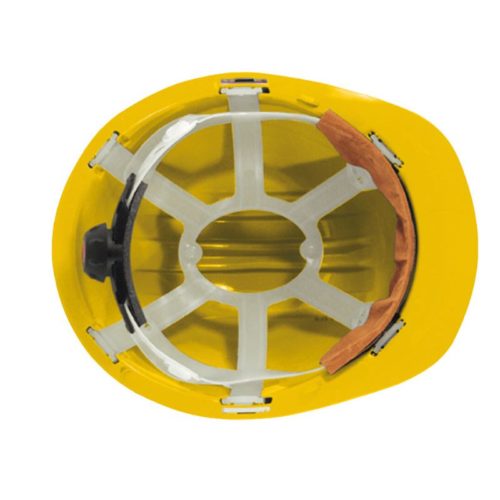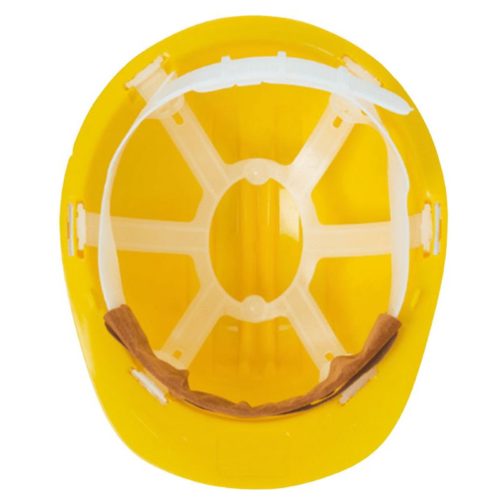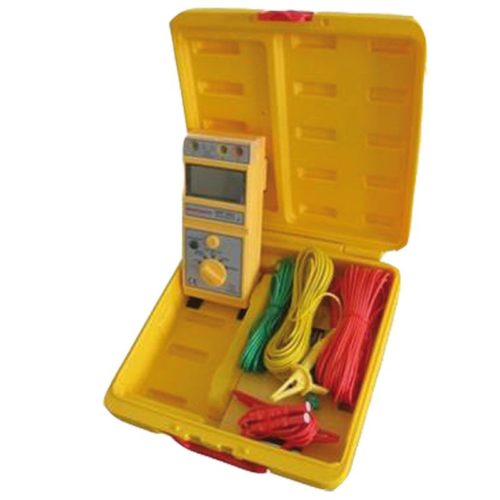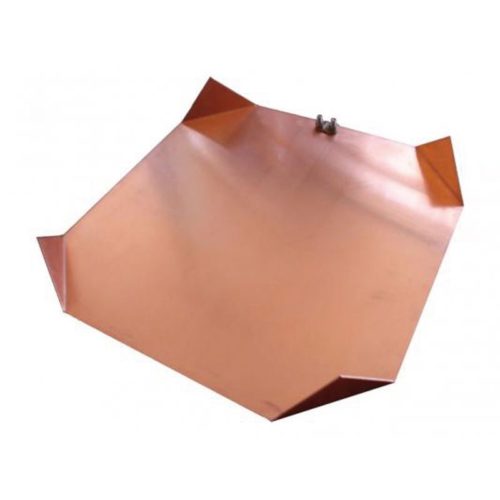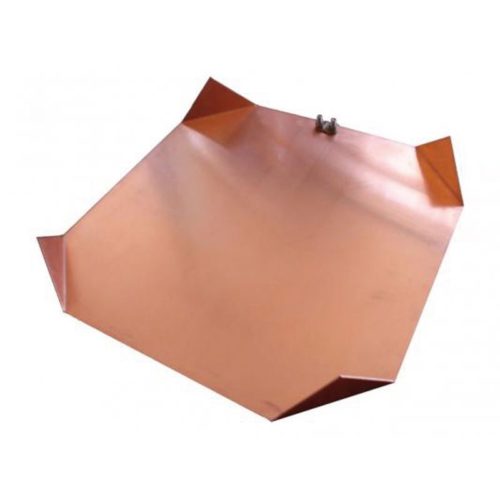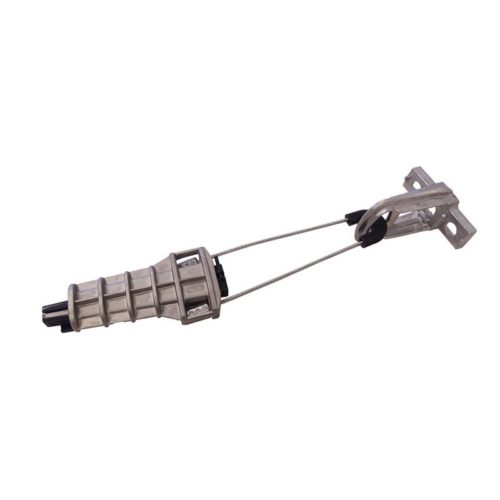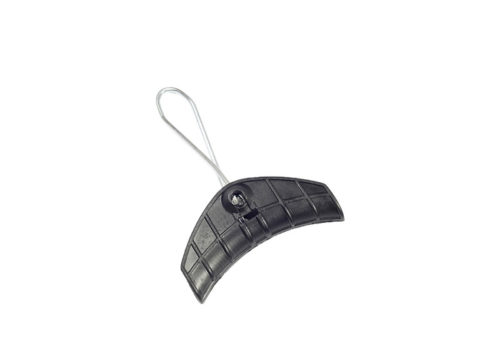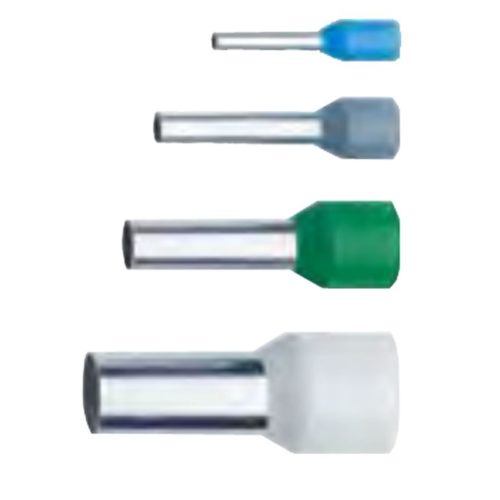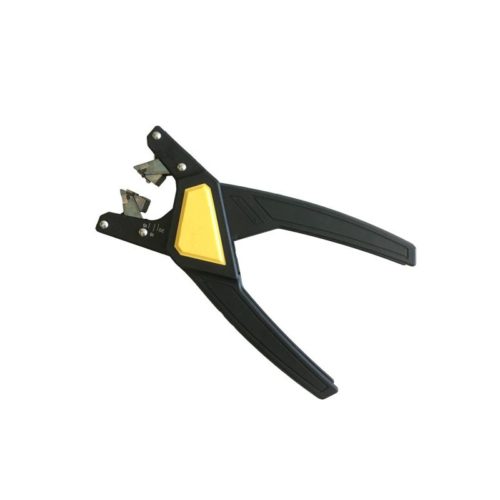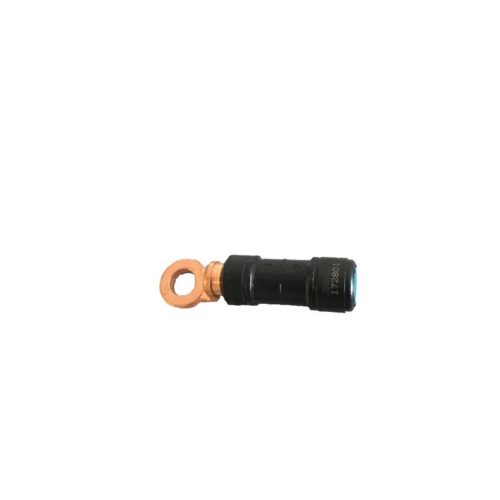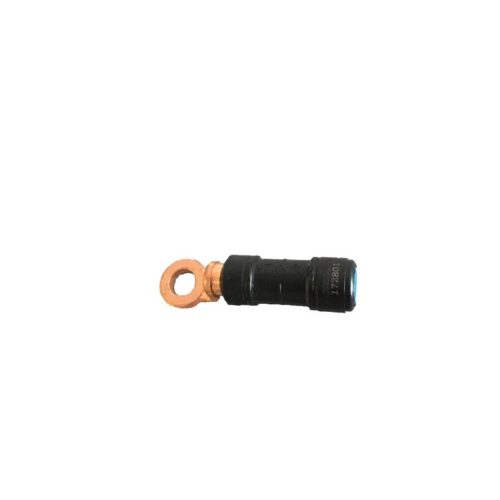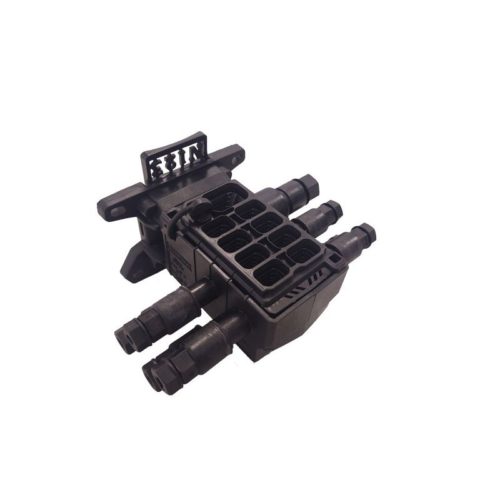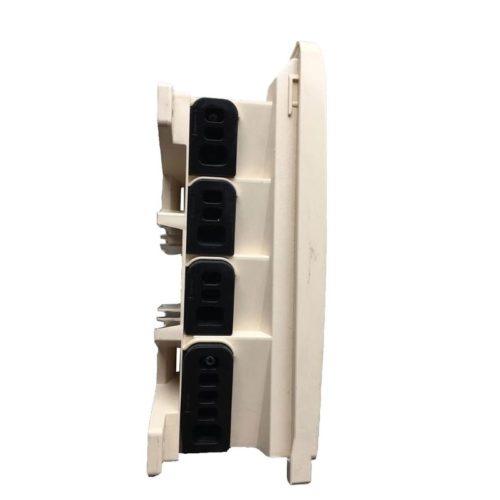-
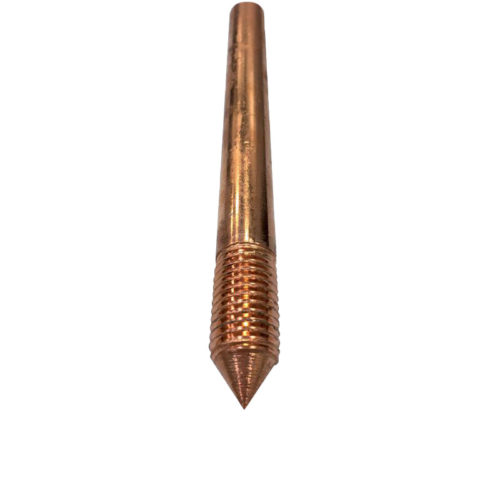
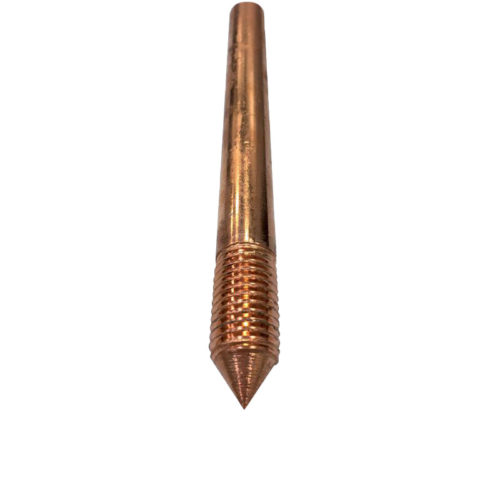 This earth rod is used for the power networks earth system. The thread on both ends makes the earth rod lengthening possible. The copper coating made by electrolytic process gives a resistance to corrosion as well as a good conductivity. The reference standards are EN 50 164-2 and EN 62 561-2. This brass clamp with stainless steel bolts is designed to establish a connection between the earth rod and the conductor. The cable can be fixed radially or axially through the "U" bolt clamp. The brass driving spikes and heads are designed to protect the earth rod during the installation. They enable to preserve the copper coating and its technical features. The brass threaded couplings enable to join two rods and get a deeper earth system.
This earth rod is used for the power networks earth system. The thread on both ends makes the earth rod lengthening possible. The copper coating made by electrolytic process gives a resistance to corrosion as well as a good conductivity. The reference standards are EN 50 164-2 and EN 62 561-2. This brass clamp with stainless steel bolts is designed to establish a connection between the earth rod and the conductor. The cable can be fixed radially or axially through the "U" bolt clamp. The brass driving spikes and heads are designed to protect the earth rod during the installation. They enable to preserve the copper coating and its technical features. The brass threaded couplings enable to join two rods and get a deeper earth system. -
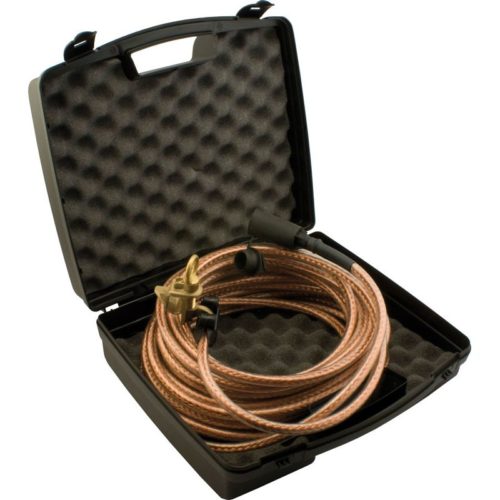
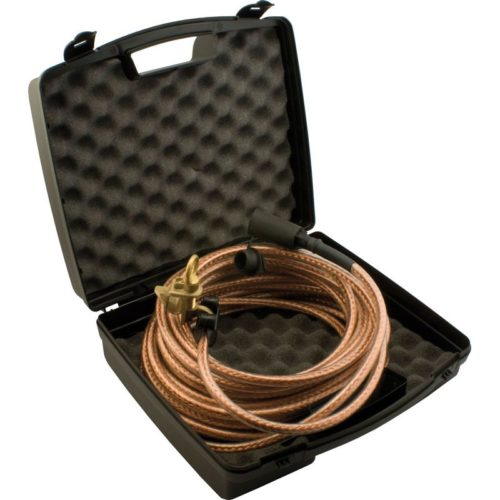 This device is designed for shortcircuiting and earthing the low voltage A.B.C. (Aerial Bundled Conductors). It is connected to a connector for measures and short-circuiting (type CMCC). This equipment is used for earth system a low voltage A.B.C. (Aerial Bundled Conductor). It is connected on shortcircuiting device linked to CMCC connectors (for measures and shortcircuiting).
This device is designed for shortcircuiting and earthing the low voltage A.B.C. (Aerial Bundled Conductors). It is connected to a connector for measures and short-circuiting (type CMCC). This equipment is used for earth system a low voltage A.B.C. (Aerial Bundled Conductor). It is connected on shortcircuiting device linked to CMCC connectors (for measures and shortcircuiting). -
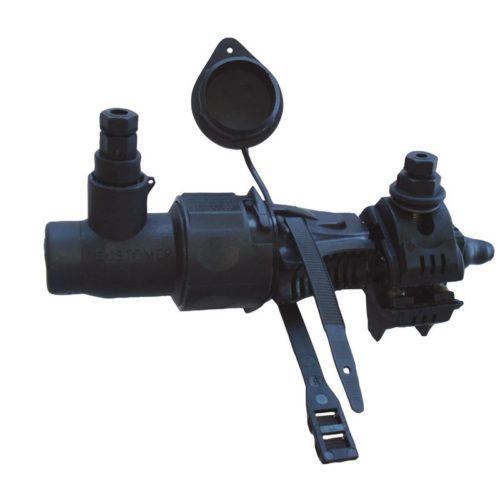 This fuse switch connector is designed to receive a 22x58mm fuse cartridge or neutral tube. It is used to protect the insulated service conductors connected to a low voltage A.B.C. (Aerial Bundled Conductors). It is used in no mechanical load situations. Opening and closing of the cutout can be performed under a load of 63A maximum.
This fuse switch connector is designed to receive a 22x58mm fuse cartridge or neutral tube. It is used to protect the insulated service conductors connected to a low voltage A.B.C. (Aerial Bundled Conductors). It is used in no mechanical load situations. Opening and closing of the cutout can be performed under a load of 63A maximum. -
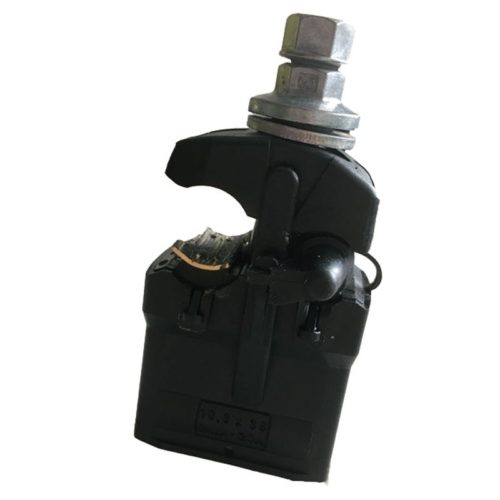
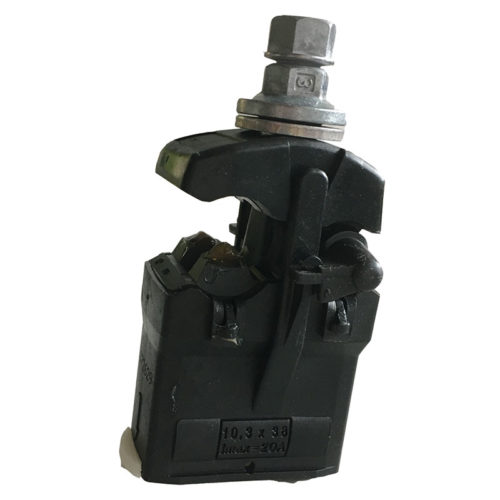 This fuse switch connector is designed to receive a 10.3x38mm fuse cartridge or neutral tube. It is used to protect street light or insulated service conductors connected to the low voltage A.B.C. (Aerial Bundled Conductors) or bare line conductors. It is designed for 20A maximum fuse cartridge. It is used in no mechanical load situations.
This fuse switch connector is designed to receive a 10.3x38mm fuse cartridge or neutral tube. It is used to protect street light or insulated service conductors connected to the low voltage A.B.C. (Aerial Bundled Conductors) or bare line conductors. It is designed for 20A maximum fuse cartridge. It is used in no mechanical load situations. -
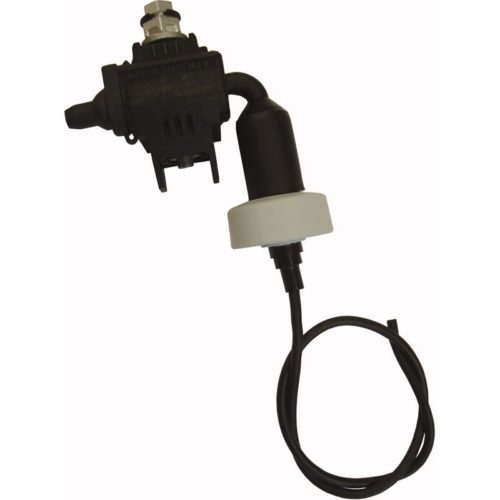
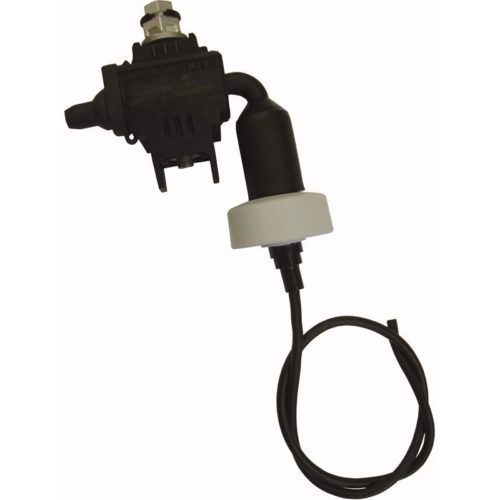 The surge protection device connector (SPD IPC) is designed to protect low voltage overhead lines and electric equipment against over-voltages. It enables the current from the lightning to be led to the ground. The surge protection device connector includes the following elements: - An insulation piercing connector, - A terminal outlet inserted in the end cap of the connector, - A surge protection device (metal oxide overmoulded with silicone) screwed into the terminal outlet, - An earth system tail welded to the surge protection device. The surge protection device reacts: - After a certain number of overvoltages, when the current passing through the surge protection device increases by more than 1mA, - In the case of atmospheric discharge (lightning strike), the current exceeding 65mA. After the surge protection device has performed, the earth system tail physically separates from the connector. The surge protection device then should be replaced with an available spare part (comprising the surge protection device and the earth system tail).
The surge protection device connector (SPD IPC) is designed to protect low voltage overhead lines and electric equipment against over-voltages. It enables the current from the lightning to be led to the ground. The surge protection device connector includes the following elements: - An insulation piercing connector, - A terminal outlet inserted in the end cap of the connector, - A surge protection device (metal oxide overmoulded with silicone) screwed into the terminal outlet, - An earth system tail welded to the surge protection device. The surge protection device reacts: - After a certain number of overvoltages, when the current passing through the surge protection device increases by more than 1mA, - In the case of atmospheric discharge (lightning strike), the current exceeding 65mA. After the surge protection device has performed, the earth system tail physically separates from the connector. The surge protection device then should be replaced with an available spare part (comprising the surge protection device and the earth system tail). -
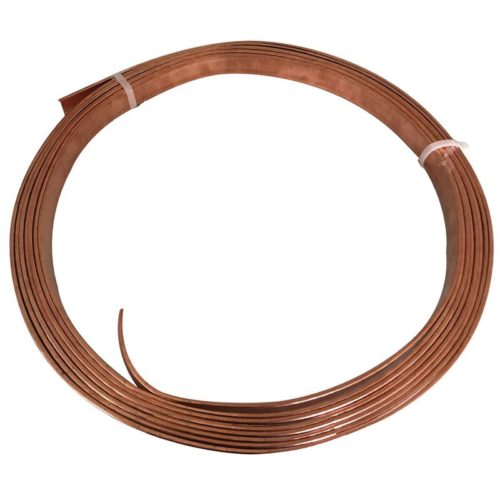
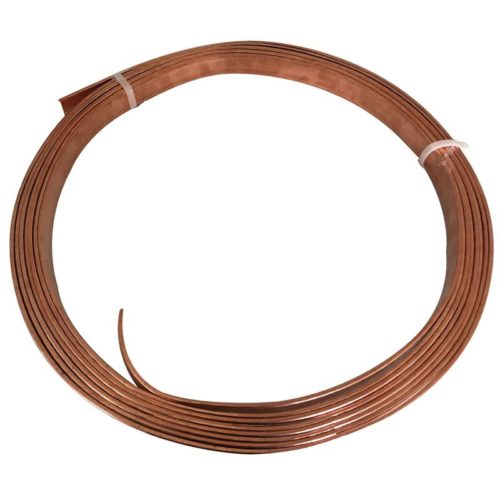 This tape is designed to conduct the electricty into the earth system and to guarantee the default current runoff. If the copper gives an important electrical and the tinned coating protects from theft thanks to the non visible copper coating conductivity. The copper bonded steel offers a good economical alternative to copper. Furthermore Galvanized steel is an economical solution to coppered tinned steel and protect from the theft too. It has a good conductivity.
This tape is designed to conduct the electricty into the earth system and to guarantee the default current runoff. If the copper gives an important electrical and the tinned coating protects from theft thanks to the non visible copper coating conductivity. The copper bonded steel offers a good economical alternative to copper. Furthermore Galvanized steel is an economical solution to coppered tinned steel and protect from the theft too. It has a good conductivity. -
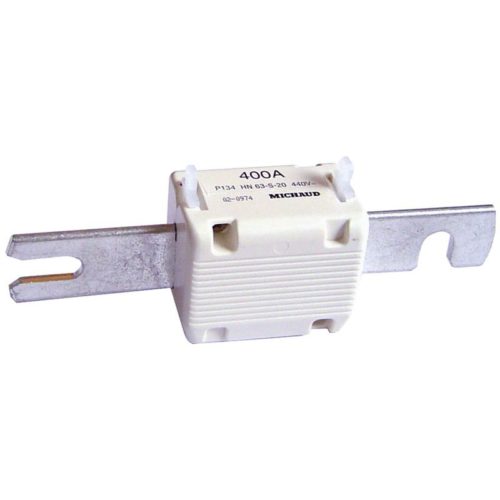
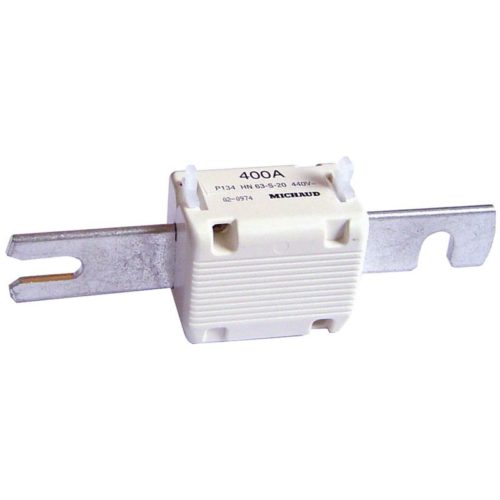 These low voltage fuses cartridges NH00, NH1 or NH2 are type gG. They are used as protection unit of the low voltage public electricity supply networks and works. It is installed in: - Low voltage switchboards of the public electricity supply substations, - Cutout boxes, inside or outside supply switches, - Switch cabinets for subsurface networks, - Metering boxes and cabinets for different uses
These low voltage fuses cartridges NH00, NH1 or NH2 are type gG. They are used as protection unit of the low voltage public electricity supply networks and works. It is installed in: - Low voltage switchboards of the public electricity supply substations, - Cutout boxes, inside or outside supply switches, - Switch cabinets for subsurface networks, - Metering boxes and cabinets for different uses -
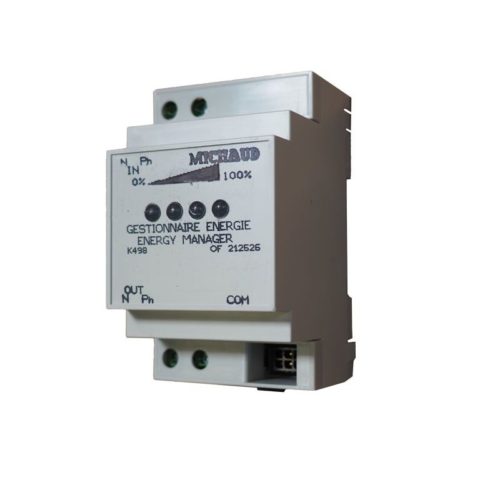
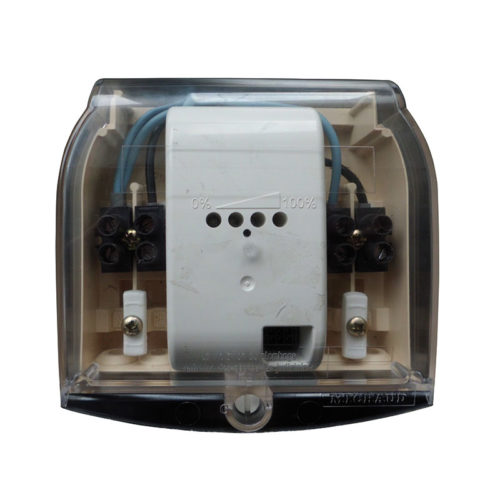 The energy manager is provided with an electronic regulator, controlling power and managing energy automatically without user / operator intervention. It is perfectly suitable for flat fee energy invoicing. It replaces the meter and cancels the requirement of consumption reading. The cabinet can be installed outside thanks to the UV resistant IP34 property. It is designed for a single phase connection.
The energy manager is provided with an electronic regulator, controlling power and managing energy automatically without user / operator intervention. It is perfectly suitable for flat fee energy invoicing. It replaces the meter and cancels the requirement of consumption reading. The cabinet can be installed outside thanks to the UV resistant IP34 property. It is designed for a single phase connection. -
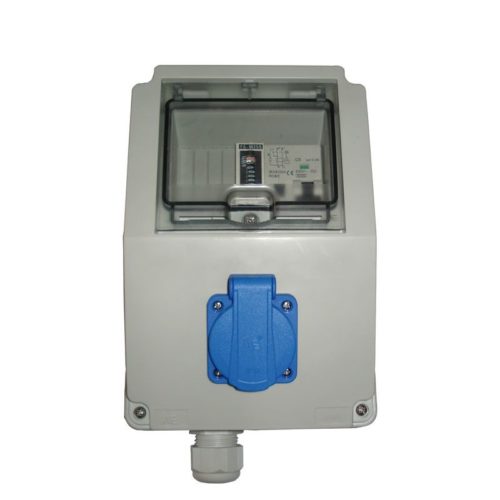
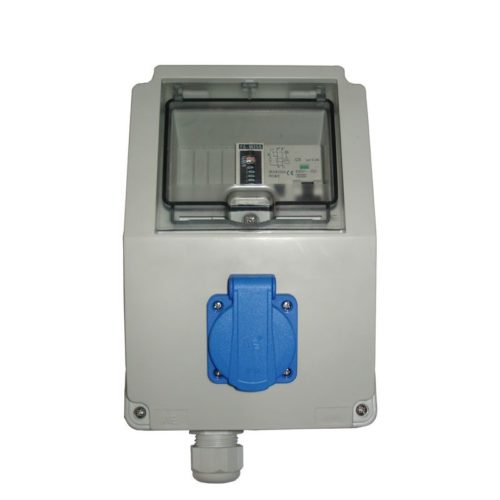 This 2 outputs meter cabinet is a solution perfectly suitable for Rural Electrification (RE) and particularly Income Generating Activities (IGA's). It comprises an internal circuit breaker, a meter and a differential circuit breaker to ensure goods and people protection. It is equipped with an input through a large cable gland for power supply and 2 outputs: - An electrical outlet for simple access to energy, - Second outlet through a smaller cable gland and black domino terminal for home wiring. The whole set is pre-wired. Ideally, it can be installed inside the home or below a shelter.
This 2 outputs meter cabinet is a solution perfectly suitable for Rural Electrification (RE) and particularly Income Generating Activities (IGA's). It comprises an internal circuit breaker, a meter and a differential circuit breaker to ensure goods and people protection. It is equipped with an input through a large cable gland for power supply and 2 outputs: - An electrical outlet for simple access to energy, - Second outlet through a smaller cable gland and black domino terminal for home wiring. The whole set is pre-wired. Ideally, it can be installed inside the home or below a shelter. -
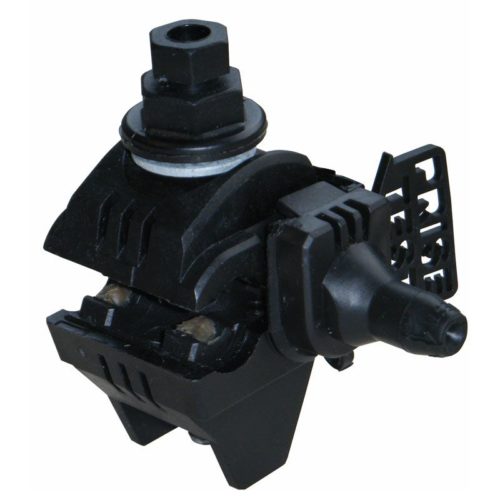
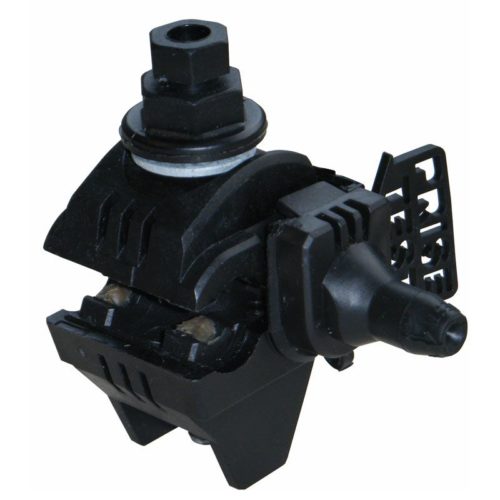 This connector is designed to connect the insulated service conductors to the low voltage A.B.C. (Aerial Bundled Conductors). It is equipped with a Test probe on the flexible sealing end cap. This enables the potential to be checked between 2 connectors installed on neutral and phase conductors and thus ensures good connection.
This connector is designed to connect the insulated service conductors to the low voltage A.B.C. (Aerial Bundled Conductors). It is equipped with a Test probe on the flexible sealing end cap. This enables the potential to be checked between 2 connectors installed on neutral and phase conductors and thus ensures good connection. -
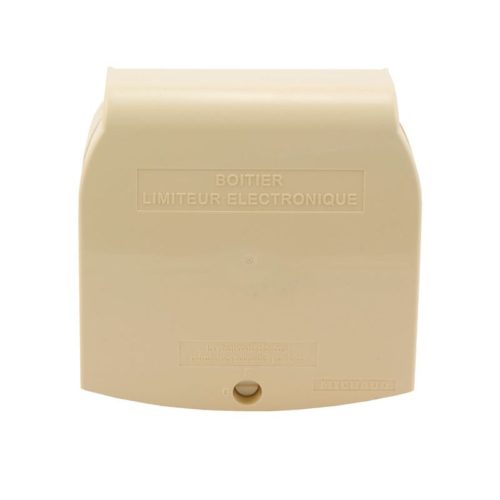
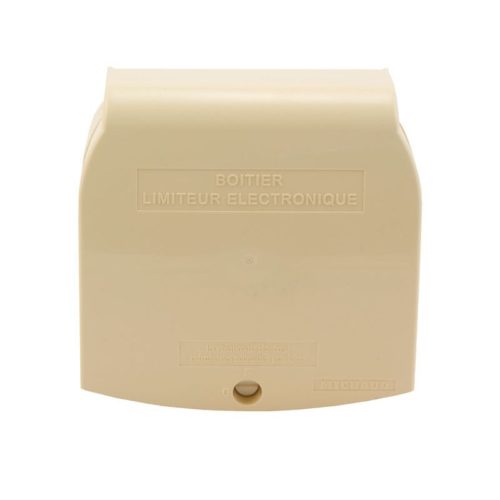 The load limiter is provided with an electronic regulator which controls intensity and manages power automatically without user/operator intervention. It is perfectly suitable for flat fee invoicing. It replaces the meter and cancels the requirement of consumption reading. The cabinet can be installed at the top of the pole or on the outside facade with the help of screws and strap. The cabinet resists to UV and to water or insect penetration (IP34D). Its cover closing can be sealed providing an excellent fraud protection. This cabinet limiter can receive a single phase connection with 2.5-16mm² cable sections.
The load limiter is provided with an electronic regulator which controls intensity and manages power automatically without user/operator intervention. It is perfectly suitable for flat fee invoicing. It replaces the meter and cancels the requirement of consumption reading. The cabinet can be installed at the top of the pole or on the outside facade with the help of screws and strap. The cabinet resists to UV and to water or insect penetration (IP34D). Its cover closing can be sealed providing an excellent fraud protection. This cabinet limiter can receive a single phase connection with 2.5-16mm² cable sections. -
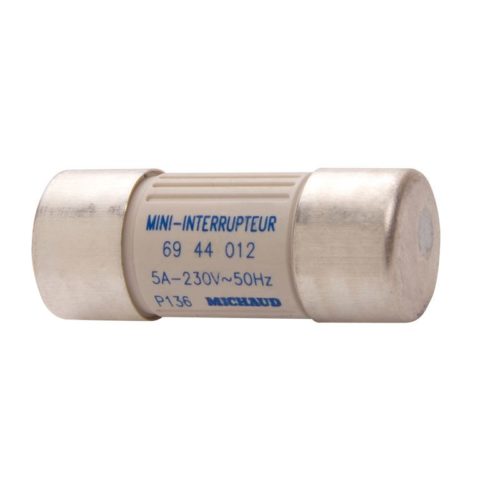
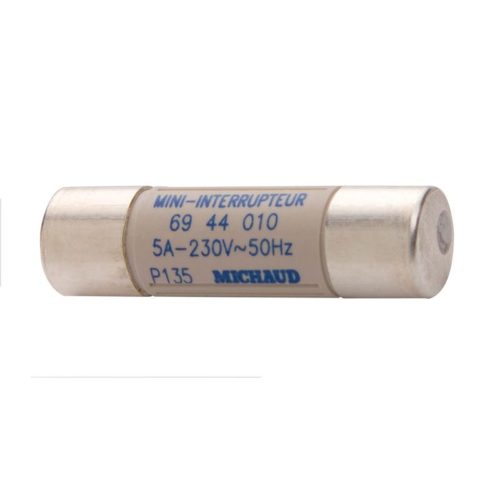 This mini-switch limits the current that can flow permanently through the connection to a certain intensity. It enables the customer's energy consumption to be controlled and limited to the subscribed power, providing excellent protection against fraud, mainly in the event of meter by-pass / shunt. Massive overconsumption due to fraud is significantly reduced.
This mini-switch limits the current that can flow permanently through the connection to a certain intensity. It enables the customer's energy consumption to be controlled and limited to the subscribed power, providing excellent protection against fraud, mainly in the event of meter by-pass / shunt. Massive overconsumption due to fraud is significantly reduced. -
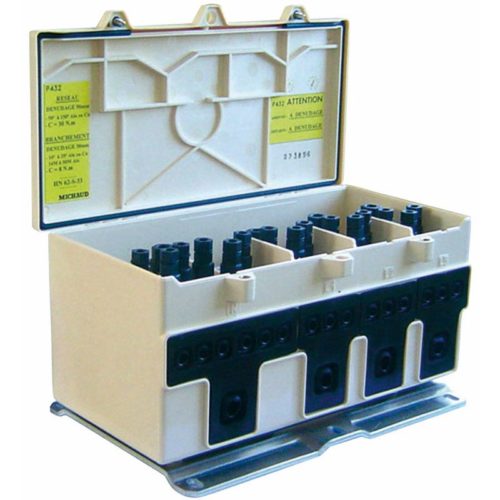
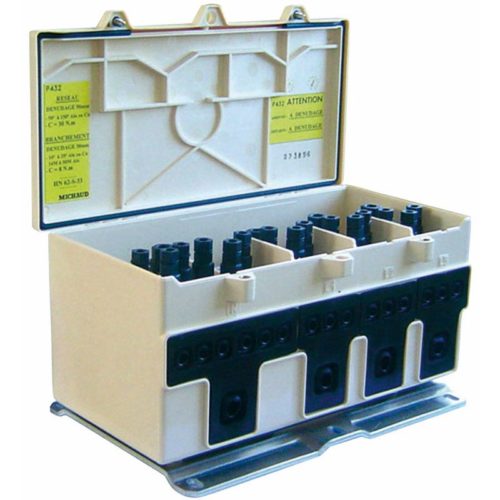 The box with 3 outlets is designed to establish up to 6 single phase connections or up to 3 three phase connections at one point of the low voltage aerial bundled network. The box with 7 outlets is designed to establish the junction of 2 overhead networks and the tap contact of 6 single phase or three phase connections maximum. These boxes can be installed on a façade or a pole. They can also be used at the network end.
The box with 3 outlets is designed to establish up to 6 single phase connections or up to 3 three phase connections at one point of the low voltage aerial bundled network. The box with 7 outlets is designed to establish the junction of 2 overhead networks and the tap contact of 6 single phase or three phase connections maximum. These boxes can be installed on a façade or a pole. They can also be used at the network end. -
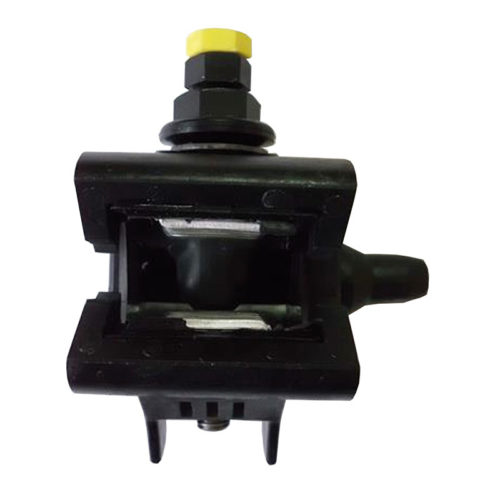
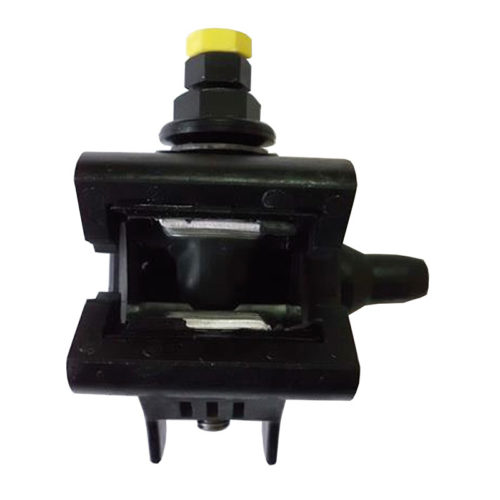 This connector designed to connect the insulated service conductors to the low voltage overhead aluminium alloy or copper bare conductor network. Two versions are available according to the type of conductor to be connected (Al or Cu). The tap and main cables are connected separately step by step to improve the electrical connection: 1. First the tap line is connected by piercing the insulation, 2. Then the main line is connected. Installation can be carried out under a maximum load of 100A.
This connector designed to connect the insulated service conductors to the low voltage overhead aluminium alloy or copper bare conductor network. Two versions are available according to the type of conductor to be connected (Al or Cu). The tap and main cables are connected separately step by step to improve the electrical connection: 1. First the tap line is connected by piercing the insulation, 2. Then the main line is connected. Installation can be carried out under a maximum load of 100A. -
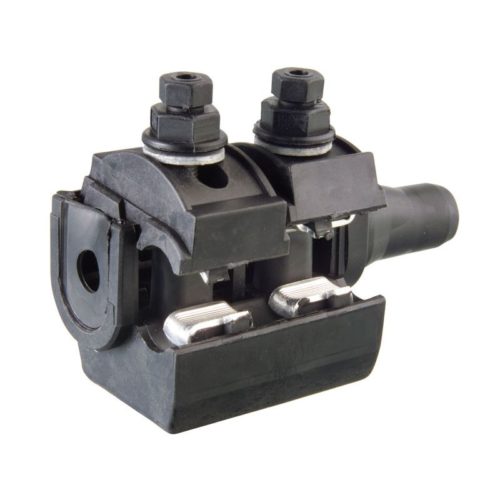
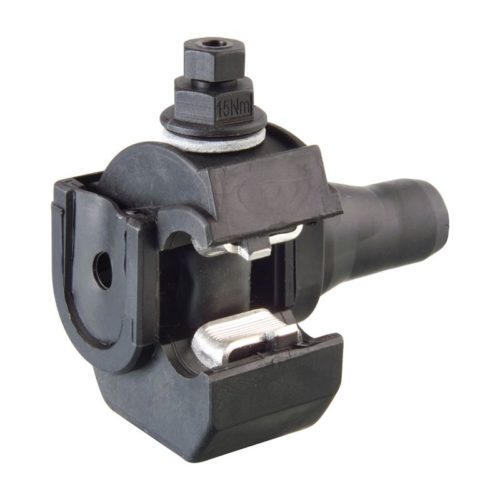 This connector is designed to connect a low voltage A.B.C. (Aerial Bundled Conductors) network to another low voltage aluminium alloy or copper bare conductors network. The section of the bare conductors is from 7 to 240mm² depending on the model. The section of the insulated cables is from 25 to 150mm² depending on the model.
This connector is designed to connect a low voltage A.B.C. (Aerial Bundled Conductors) network to another low voltage aluminium alloy or copper bare conductors network. The section of the bare conductors is from 7 to 240mm² depending on the model. The section of the insulated cables is from 25 to 150mm² depending on the model. -
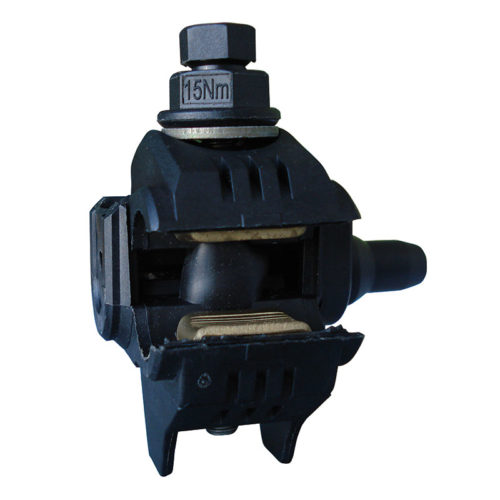
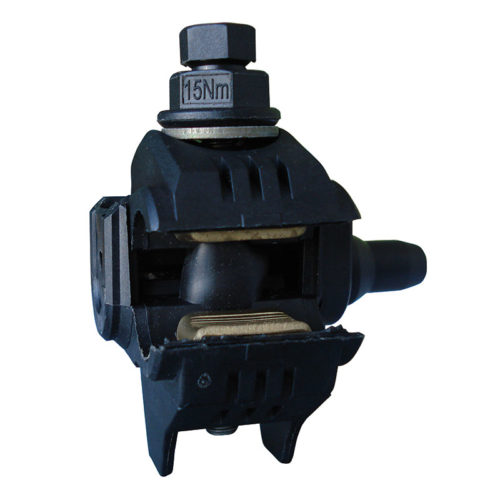 This connector is designed to connect the insulated service conductors to the low voltage overhead copper or aluminium alloy bare conductor network. Two versions are available according to the type of conductor to be connected (Al or Cu): - CNA (with aluminium alloy contact bridges), - CNU (with rough brass contact bridges).
This connector is designed to connect the insulated service conductors to the low voltage overhead copper or aluminium alloy bare conductor network. Two versions are available according to the type of conductor to be connected (Al or Cu): - CNA (with aluminium alloy contact bridges), - CNU (with rough brass contact bridges). -
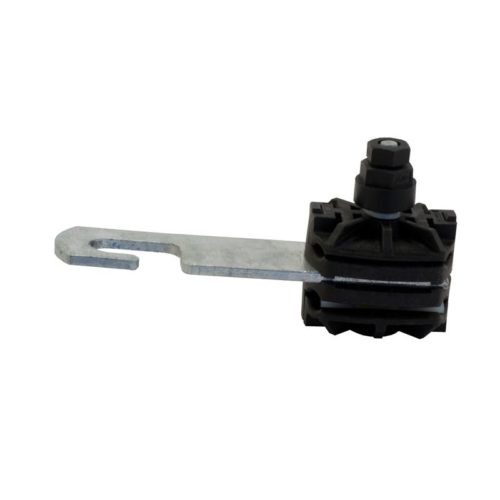
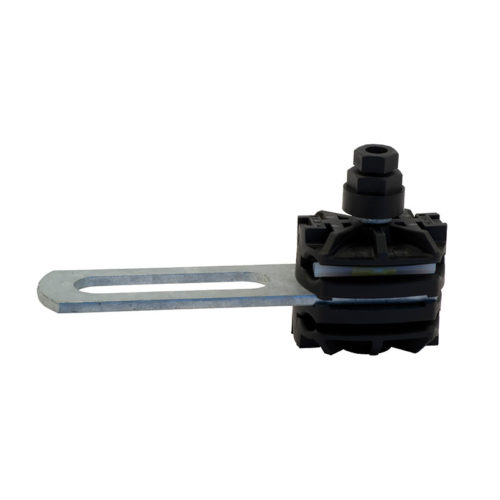 The service anchoring assembly EA 25 is designed for fixing low voltage service A.B.C. (Aerial Bundled Conductors) with capacity of 2x6 to 4x25mm². The anchoring clamp is also available in an adjustable hook version. The service anchoring assembly PA 35 is designed for fixing or suspending low voltage service A.B.C. (Aerial Bundled Conductors) with capacity of 3x16 to 4x35mm².
The service anchoring assembly EA 25 is designed for fixing low voltage service A.B.C. (Aerial Bundled Conductors) with capacity of 2x6 to 4x25mm². The anchoring clamp is also available in an adjustable hook version. The service anchoring assembly PA 35 is designed for fixing or suspending low voltage service A.B.C. (Aerial Bundled Conductors) with capacity of 3x16 to 4x35mm². -
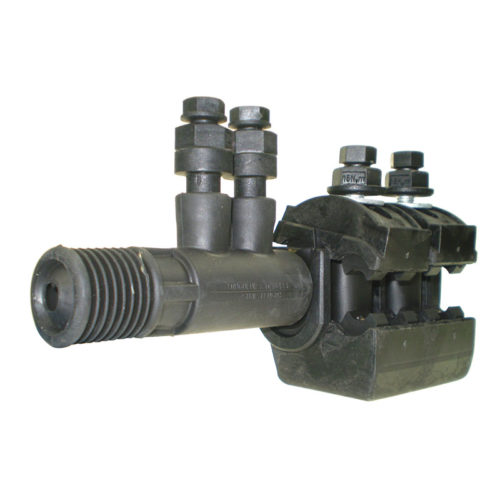
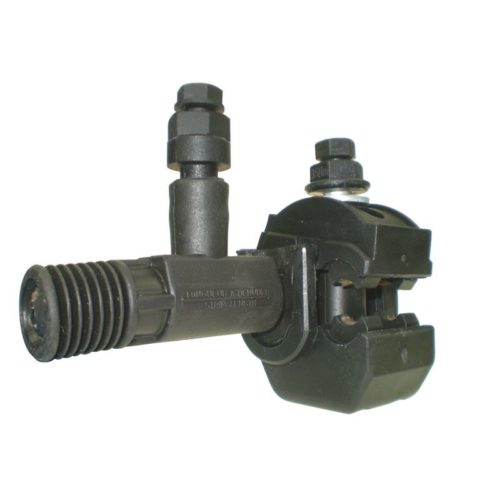 This c onnector is de signed to connect a low voltage A.B.C. (Aerial Bundled Conductors) to another network of the same type or to a low voltage aluminium alloy or copper bare conductors network. In main line, the section of the insulated conductors is from 25 to 150mm² depending on the model, and is from 7 to 120mm² on bare conductors. In tap line, the section of the insulated conductors is from 25 to 70mm² and from 35 to 150mm² depending on the model.
This c onnector is de signed to connect a low voltage A.B.C. (Aerial Bundled Conductors) to another network of the same type or to a low voltage aluminium alloy or copper bare conductors network. In main line, the section of the insulated conductors is from 25 to 150mm² depending on the model, and is from 7 to 120mm² on bare conductors. In tap line, the section of the insulated conductors is from 25 to 70mm² and from 35 to 150mm² depending on the model.
